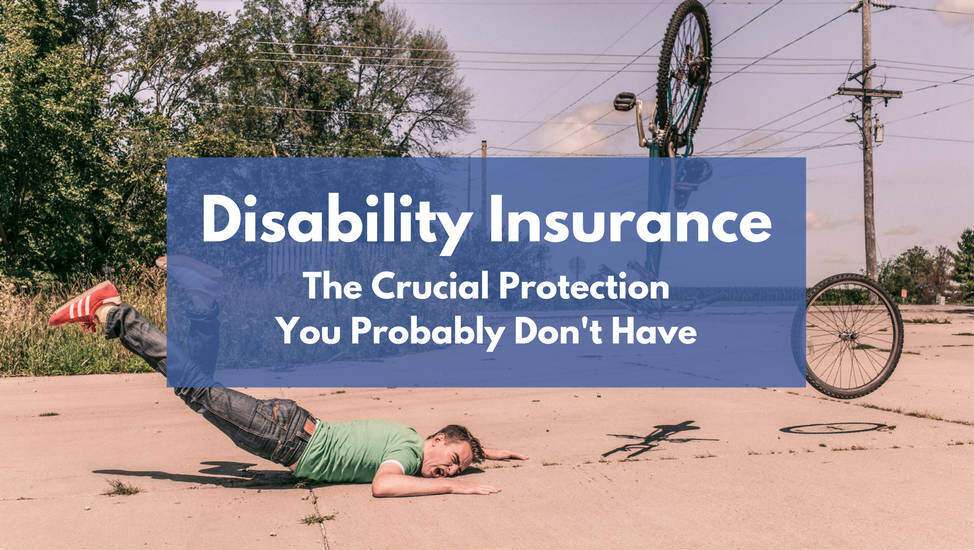Depending on your career, you may find that disability insurance is a must for you. Since you never know when you’re going to get injured at home or sick, you need to take steps to defend yourself. One way to do that is by acquiring sufficient long-term disability insurance. Just remember that the insurance is not going to start paying benefits immediately. You’re dealing with long-term disability insurance meaning you’ll have to wait before the benefits kick in. Within this guide, you’ll learn more about the waiting period for long-term disability insurance.
Two Types
Canadian consumers should know that they have access to two types of disability insurance. You can buy short-term and long-term disability insurance. With the latter, you won’t be able to get benefits immediately. This is why you’ll want to buy a combination of both. While you wait for your long-term disability benefits to start, you can take advantage of short-term disability insurance. You’ll want to have both policies so you can avoid going without a paycheck.
Whether you have a plan through your employer or you’re buying an individual plan, you’ll want to make sure that you have both.
When Short-Term Stops
When it comes down to it, there are many unknowns regarding disability insurance. This is true because the specifics are going to vary significantly from one policy to another. Depending on your policy, your short-term insurance may last a few months or longer. Then, you’ll want to switch over to long-term disability insurance. It is pertinent to find out when your short-term disability is going to stop so you can switch immediately.
So, when will your short-term disability stop? You’ll want to check your paperwork to find out how long your insurance lasts. As soon as you realize that you’re not going to recover in time, you’ll want to go ahead and file a claim for long-term disability insurance.
How Much Does Long-Term Disability Insurance Cover?
While disability insurance is very beneficial, it is not comprehensive. One thing to note is that this insurance is not going to cover all of your wages. Instead, it will cover a portion of your wages. The specifics depend on the policy you’re using. Most of these policies will provide you with roughly 60% of your wages. The difference between disability and worker’s compensation is that the latter is designed for people who are injured at work. Long-term disability is best for people who are injured at home.
The Elimination Period
When dealing with long-term disability insurance, you’ll have to worry about the elimination period. This may sound like it means the end of the insurance but it isn’t. Instead, the elimination period is going to help you determine when your insurance policy begins providing benefits. The elimination period is going to vary significantly. Furthermore, you will be able to adjust the cost of your premiums by changing your policy’s elimination period.
Once you’ve become ill or injured, a waiting period will start. This triggers the start of the elimination period. Once the elimination period has elapsed, you will start receiving benefits. So, how long will the elimination period last? In most cases, it will be 90 days or so. You can extend this period and save yourself money in premiums. Or, you can pay higher premiums to decrease the length of the elimination period.
Premium Changes
Again, you will be able to change the elimination period of your policy. However, this is going to greatly impact your premiums. Nevertheless, you can use this to your advantage. If you want the elimination period to elapse much sooner, you can do so but you’ll pay a higher premium. As an example, you may receive an elimination period of 30 days while paying $240 a month. If you extend the elimination period, you can dramatically decrease the monthly premium. For instance, having a 180 day elimination period means you’ll pay around $108.
It is pertinent to choose an elimination period that works for you. Once this time has passed, you will begin receiving benefits. With this in mind, you shouldn’t make the elimination period too long but you don’t want to pay expensive premiums either.
Choosing An Elimination Period
Ultimately, Canadian consumers have the option of adjusting the elimination period associated with their insurance policy. With that being said, you need to go to great lengths to find the elimination period that works best for you. You’ll want to determine how long your elimination period should be. If you’re healthy and work a safe job, you should think about choosing a longer elimination period. You are less likely to get injured so you should be okay.
However, some people are living with health conditions. And, they work dangerous jobs. People who fit into this category should choose a shorter elimination period. Either way, you need to find out what is going to work best for you.
Types of Disability Insurance we offer
- Long-Term Disability Insurance (LTD)
- Short-Term Disability Insurance
- Key Person Disability Insurance
- Self Employed Disability Insurance
- Mortgage Disability Insurance
- Temporary Disability Insurance
- Supplemental Disability Insurance
Other Disability Insurance Resources that you can read
- Are Canadian Disability Insurance Premiums Tax-Deductible?
- Will My Long-Term Disability Income Be Taxable?
- Dealing With Elimination Periods For Short And Long-Term Disability Insurance
- Pregnancy And Disability Insurance
- Who Pays For Disability Insurance?
- Why Employers Offer Disability Insurance
- Maternity Leave And Disability Insurance Benefits
- How Long Do Long-Term Disability Benefits Pay?
- How Much Does Long-Term Disability Insurance Cost?
- Is Disability Insurance Worth It?
- How Much Disability Insurance Should I Get?
- What Does Disability Insurance Cover?
- What To Look For In Disability Insurance?
- Do I Need Disability Insurance After I Retire?
- Does Disability Insurance Cover Pre-Existing Conditions?
- How Does Disability Insurance Work?
- How Long Does Long Term Disability Insurance Pay?
- Is Wage Loss Insurance The Same As Short Term Disability?
- When Does Long Term Disability Insurance Start?
- Can You Buy Your Own Short Term Disability Insurance?
- Can You Get Disability Insurance If You Are Unemployed?
- Can I Buy My Own Short-Term Disability Insurance?
- Can You Get Individual Short Term Disability Insurance?
- Are Credit Cardholders Insured By Disability Insurance Plans?

